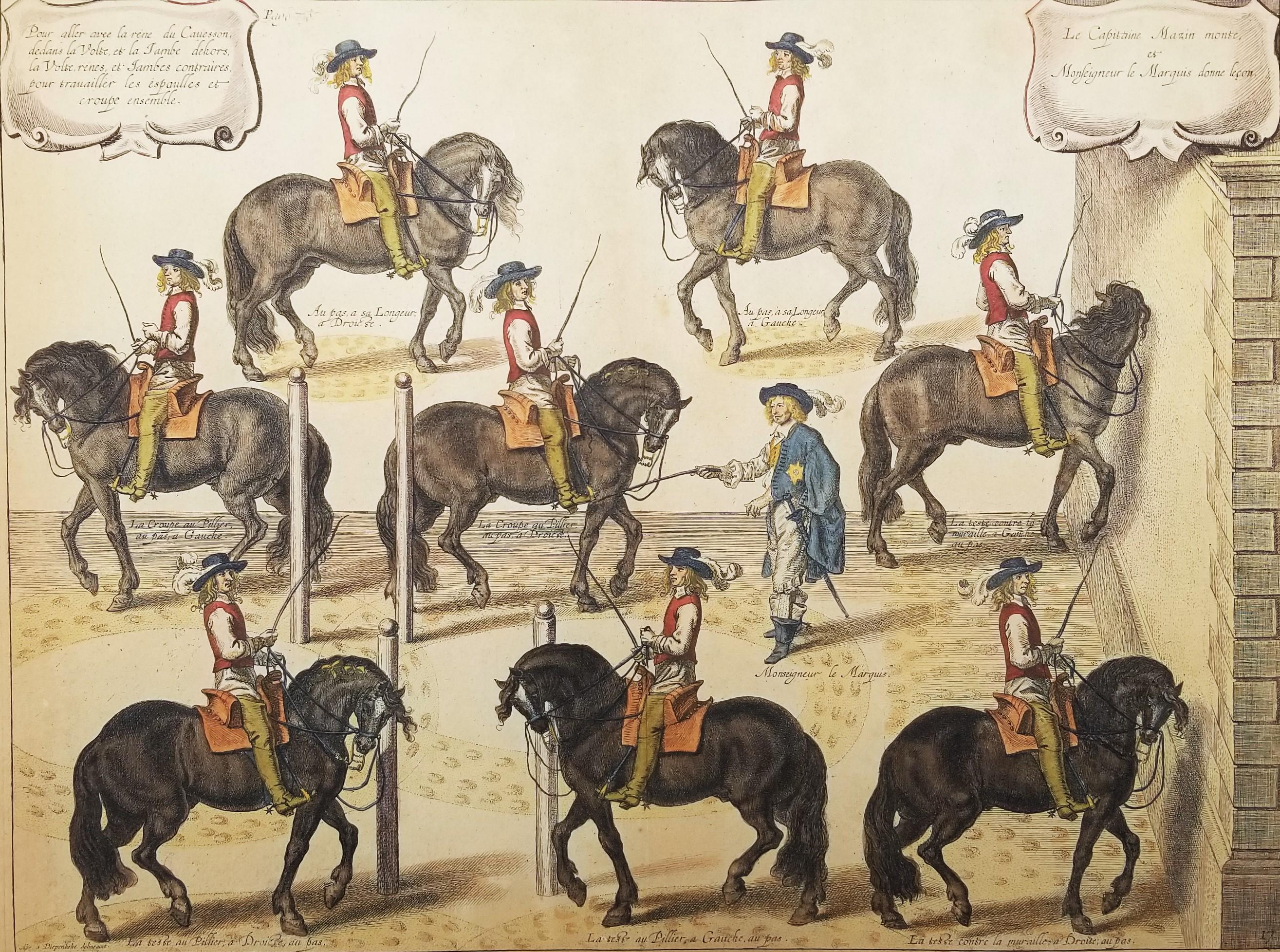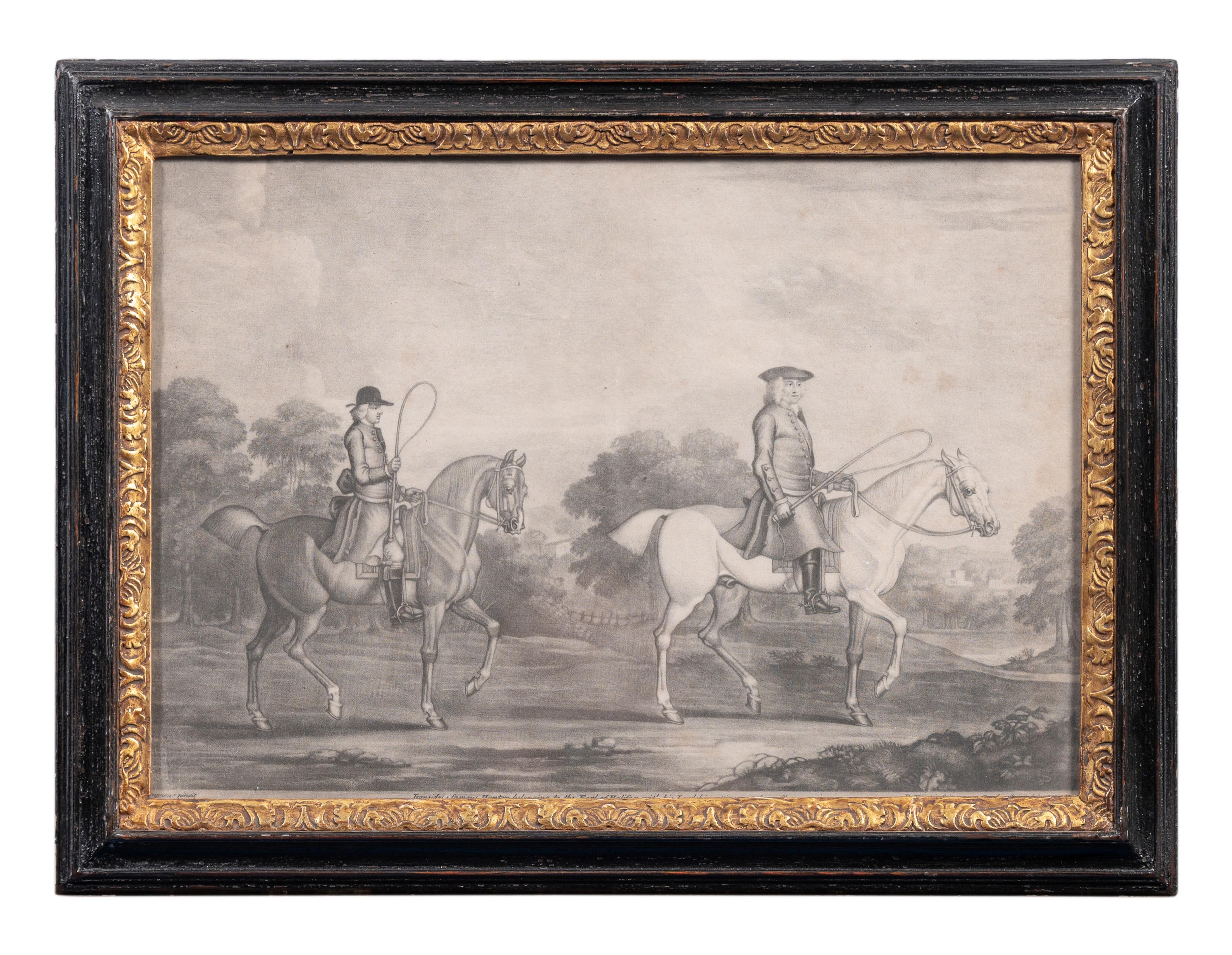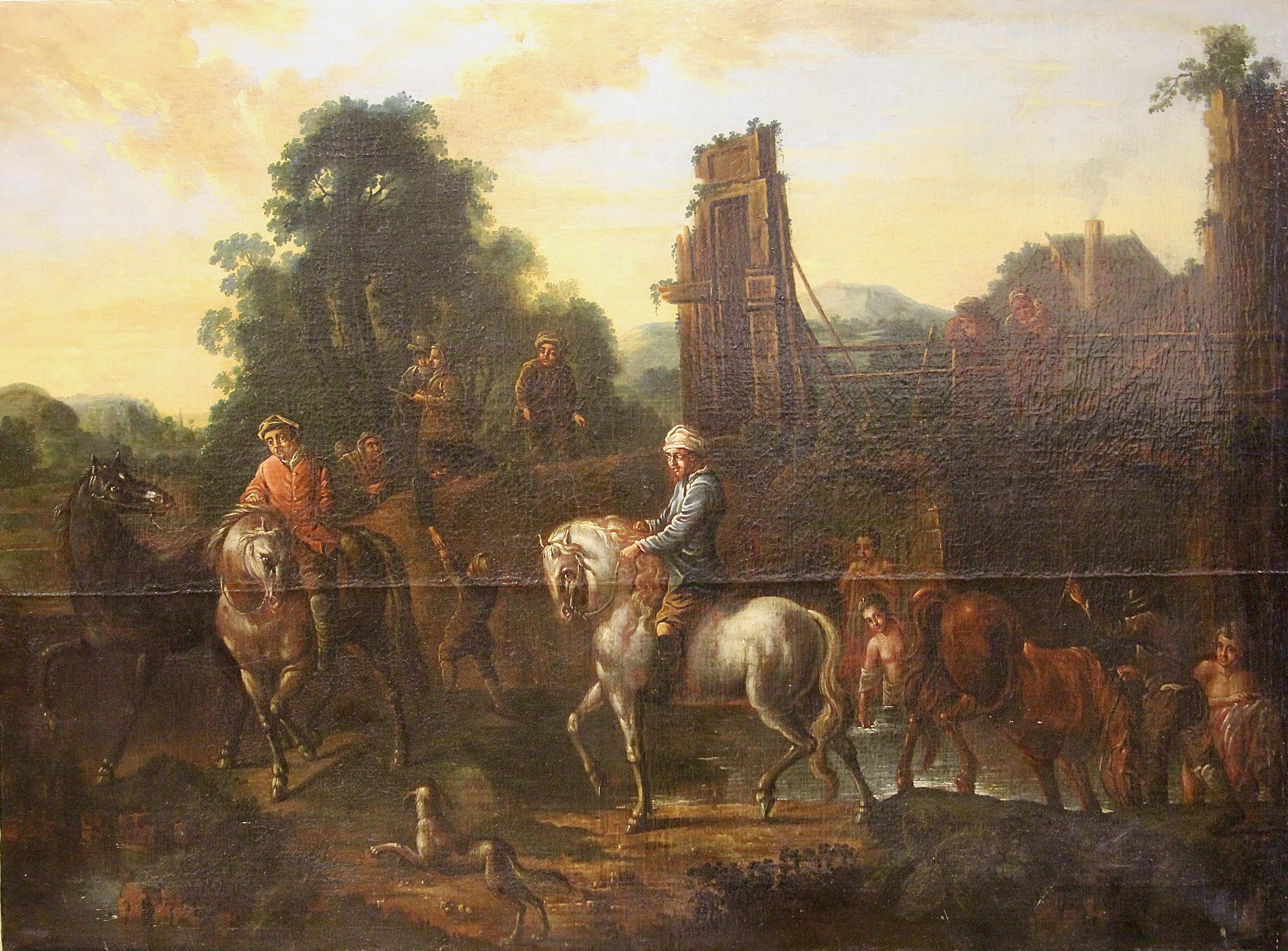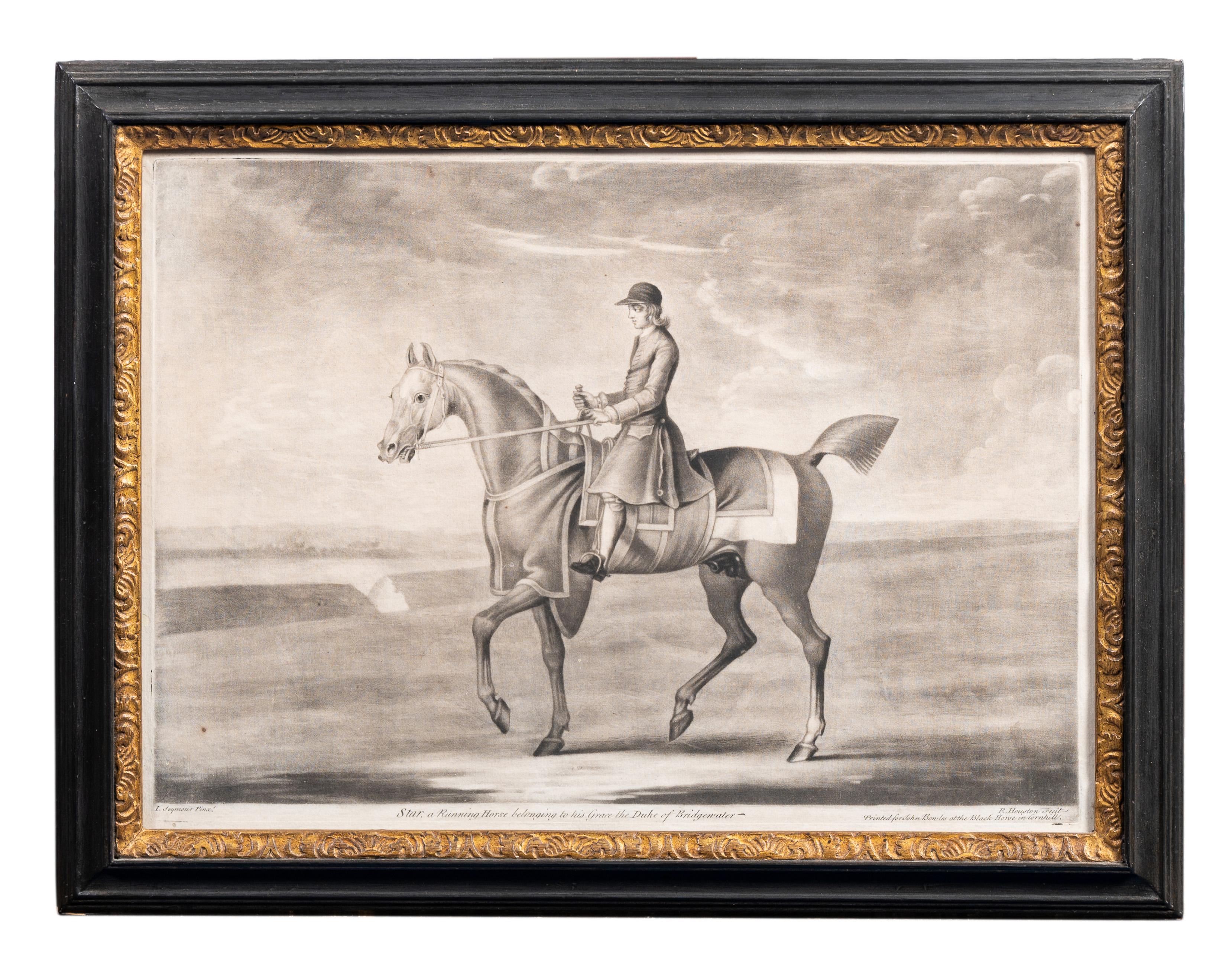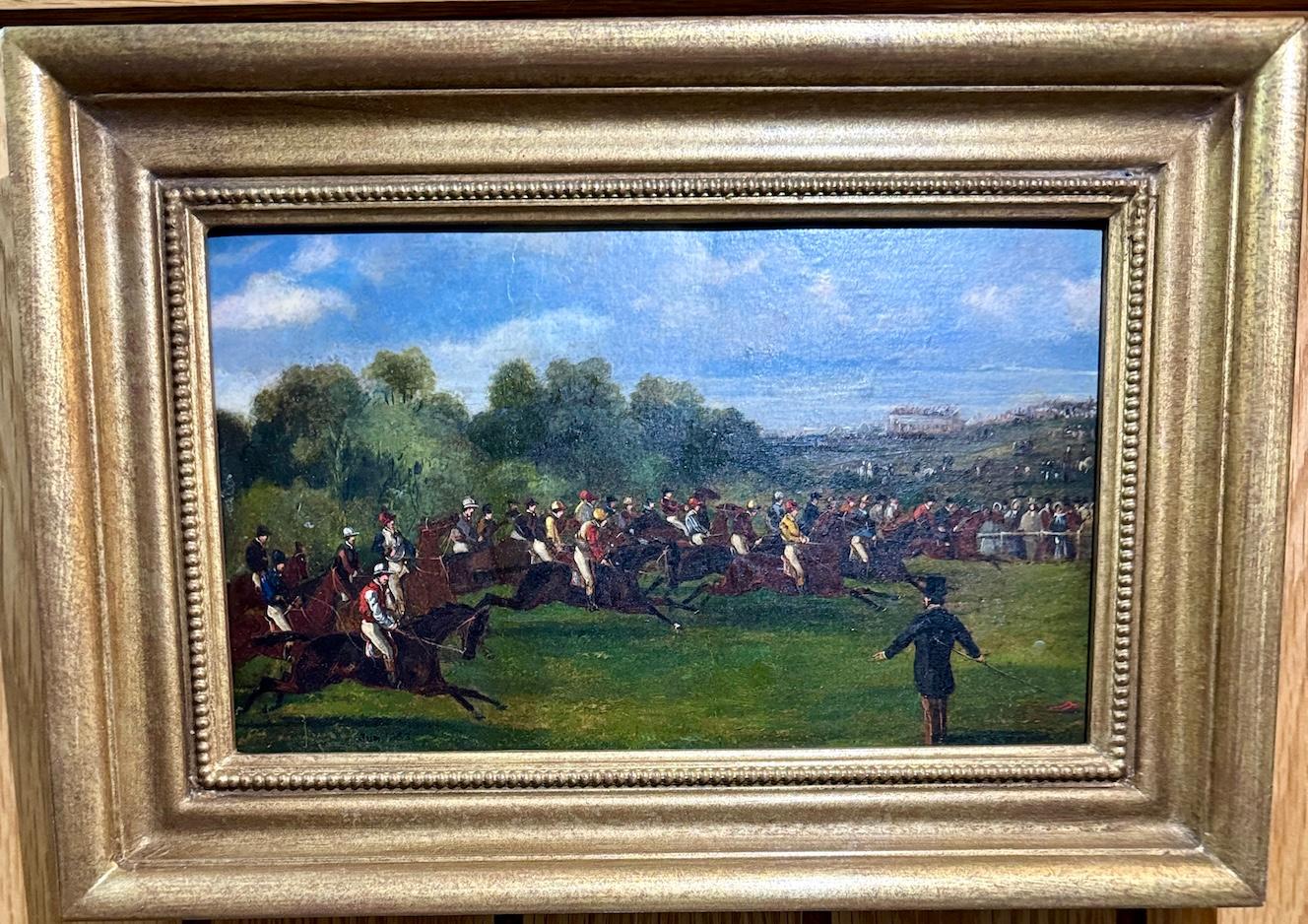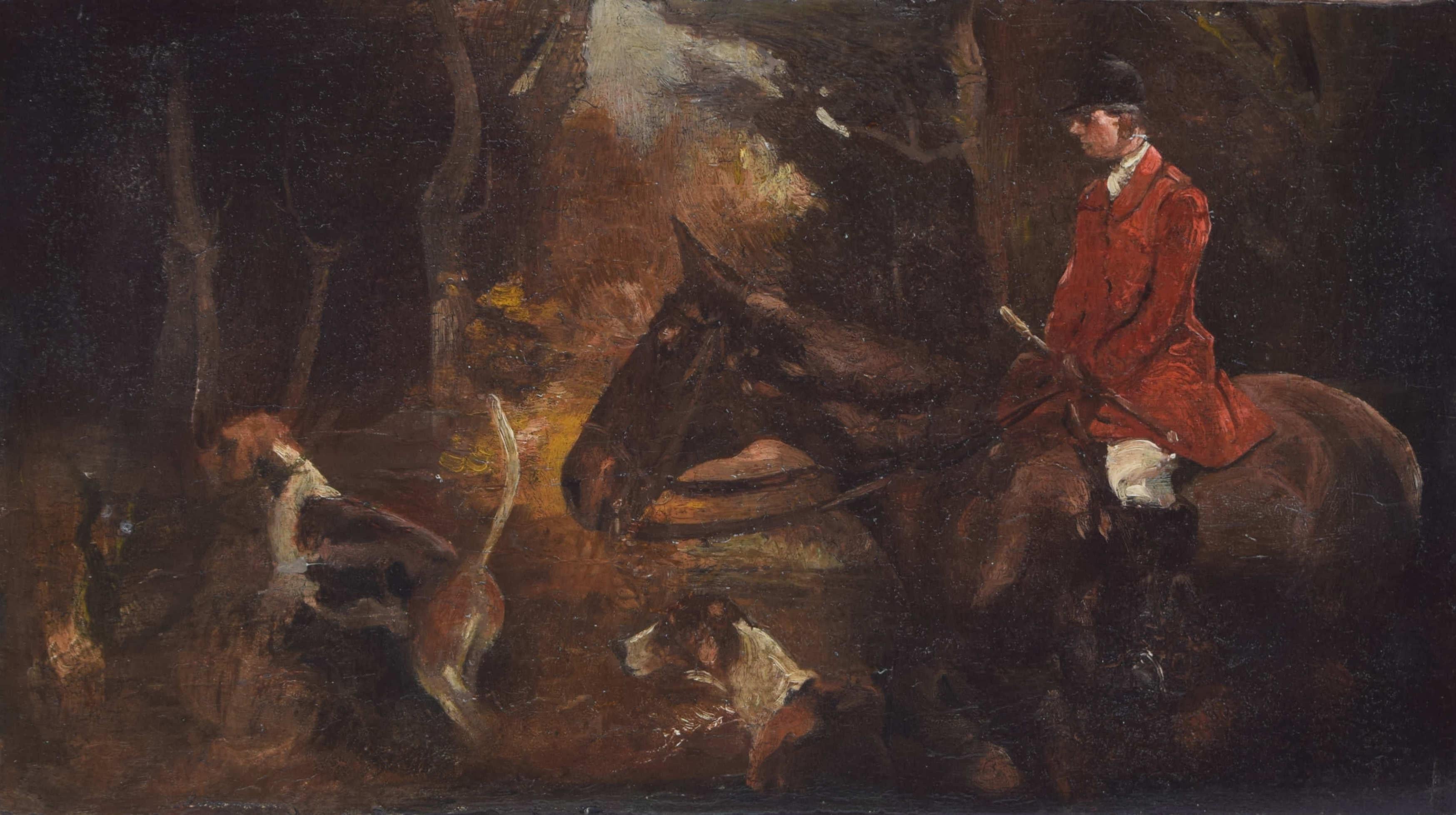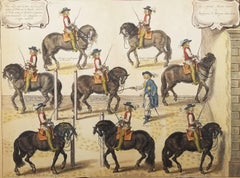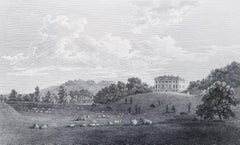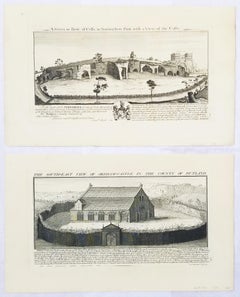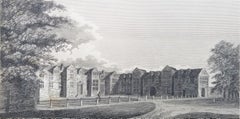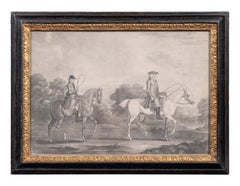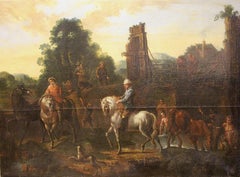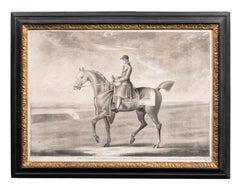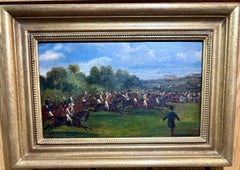Articoli simili a Welbeck Park Belongs to the Marquis of Newcastle /// Equestrian Horse Old Master
Vuoi altre immagini o video?
Richiedi altre immagini o video al venditore
1 di 21
William CavendishWelbeck Park Belongs to the Marquis of Newcastle /// Equestrian Horse Old Master1737
1737
1041,11 €
Spedizione
Recupero del preventivo…La promessa 1stDibs:
Garanzia di autenticità,
Garanzia di rimborso,
Annullamento entro 24 ore
Informazioni sull’articolo
Artist: William Cavendish (English, 1593-1676)
Title: "Welbeck Park Belongs to the Marquis of Newcastle" (Plate 38, Page 263)
Portfolio: Methode et Invention Nouvelle de Dresser Les Chevaux (New Method and Invention of Dressing Horses)
Year: 1737 (Second edition)
Medium: Original Hand-Colored Engraving and Etching on watermarked laid paper
Limited edition: Unknown
Printer: Jean Brindley, London, UK
Publisher: Jean Brindley, London, UK
Reference: Brunet I, 1699; Graesse II:93; Lowndes VI:1663; Mellon/Podeschi 26, page 34-35; Mennessier de la Lance II, page 246-247; Nissen ZBI 848; Huth page 21
Sheet size: 17" x 21.25"
Image size: 15" x 20"
Condition: Toning to sheet and some edgewear in right margins. Centerfold is separated at very top and bottom in margins. It is otherwise a strong impression in good condition with strong colors
Notes:
With overlapping centerfold as issued. Engraved by Dutch artist Theodor van Kessel (1620-1696) after a drawing by Dutch artist Abraham van Diepenbeeck (1596-1675). Comes from Cavendish's one volume "Methode et Invention Nouvelle de Dresser Les Chevaux", (1737) (Second edition), which consists of 42 double-paged engravings. Printed in one color from one copper plate: black. There is an unidentified fleur-de-lis style watermark in the center of the left sheet.
The 1657-1658 (First edition) of "Methode et Invention Nouvelle de Dresser Les Chevaux" was printed and published by Jacques Van Meurs in Antwerp, Belgium in two issues, 1657 and 1658. It consists of 42 double-paged copperplate engravings executed by Dutch artists Pieter de Jode II or (the Younger) (1606-1674), Pieter Clouwet (1629-1670), Pieter van Lisebetten (1630-1678), Cornelis Van Caukercken (1626-1680), Lucas Vorsterman II (1624-c.1666), Adriaen Lommelin (1620-1673), and Theodor van Kessel (1620-1696) after drawings by Dutch artist Abraham van Diepenbeeck (1596-1675). "This first printing was largely destroyed by fire in the bookseller’s shop, and is all but impossible to acquire." - Brunet. The 1737 (Second edition) of "Methode et Invention Nouvelle de Dresser Les Chevaux" was the first to be published in England using the same original 42 copperplates and 50 woodcut text diagrams from 1658, acquired by printer/publisher Jean Brindley in London, UK.
"The Duke of Newcastle, a staunch royalist went into exile to Antwerp in 1644. Newcastle had bought a pair of Barbary horses in Paris and set up a stable for training his horses. Translated from his manuscript in English, it illustrates the riding school which, in spite of the loss of a vast fortune in England during the Civil War, he managed to build up at Antwerp where he was residing as an exile from the Commonwealth. Although showered with honors by Charles II at the Restoration, he retired to his estates in Derbyshire and devoted himself to literature, the breeding of horses and equitation. His manége near Bolsover still exists. This work, partly paid for by his friend Sir Hugh Cartwright, is a celebration of Dukes' horses and their training. The plates include five equestrian portraits, four of the author; five plates of his own horses; and 24 scenes showing horses being trained (most featuring the Duke, Captain Mazin and occasionally, a groom named Palfrenier). There are also two allegorical designs, in which the Duke is adored by a circle of reverential horses, and at the end a portrait of the Cavendish family." - Christie's, New York
Biography:
William Cavendish, 1st Duke of Newcastle upon Tyne, KG, KB, PC (c. 16 December 1593 – 25 December 1676), who after 1665 styled himself as Prince William Cavendish, was an English courtier and supporter of the arts. He was a renowned horse breeder, as well as being patron of the playwright Ben Jonson and the intellectual group known as the Welbeck Circle. Despite spending the then enormous sum of £15,000 entertaining Charles I in 1634, he failed to gain a significant political post. In the early stages of the First English Civil War, he was appointed Royalist Captain-General in Northern England; he financed much of the war effort himself, later claiming this totaled in excess of £1,000,000. After the defeat at Marston Moor in July 1644, a battle fought against his advice, he went into exile in Europe. He returned to England after the Stuart Restoration in 1660, and although created Duke of Newcastle in 1665, he remained on the fringes of the court and became critical of Charles II. He died in 1676 and was buried in Westminster Abbey.
- Creatore:William Cavendish (1593 - 1676, Inglese)
- Anno di creazione:1737
- Dimensioni:Altezza: 43,18 cm (17 in)Larghezza: 53,98 cm (21,25 in)
- Tecnica:
- Movimento e stile:
- Periodo:1730-1739
- Condizioni:
- Località della galleria:Saint Augustine, FL
- Numero di riferimento:1stDibs: LU12126068442
Informazioni sul venditore
5,0
Venditore Platino
Venditori Premium con valutazione 4.7+ e tempi di risposta entro 24 ore
Fondazione nel 1978
Venditore 1stDibs dal 2015
1329 vendite su 1stDibs
Tempo di risposta standard: <1 ora
- SpedizioneRecupero del preventivo…Spedizione da: Saint Augustine, FL
- Politica di reso
Alcune parti di questa pagina sono state tradotte automaticamente. 1stDibs non può garantire che le traduzioni siano corrette. L’inglese è la lingua predefinita del sito.
Garanzia di autenticità
Nell’improbabile caso in cui si verifichi un problema con l’autenticità di un articolo, contattaci entro un anno per ottenere un rimborso completo. DettagliGaranzia di rimborso
Se il tuo articolo non corrisponde alla descrizione, è danneggiato durante il trasporto o non arriva, contattaci entro 7 giorni per un rimborso completo. DettagliAnnullamento entro 24 ore
Hai un periodo di tolleranza di 24 ore per annullare il tuo acquisto, senza necessità di fornire spiegazioni.Venditori professionali selezionati
I nostri venditori di livello internazionale devono aderire a rigorosi standard di servizio e qualità, garantendo l’integrità delle inserzioni.Garanzia miglior prezzo
Se scopri che un venditore ha pubblicato altrove lo stesso articolo a un prezzo più basso, applicheremo lo stesso prezzo.Consegna globale affidabile
La nostra rete di vettori leader del settore offre opzioni di spedizione specializzate in tutto il mondo, inclusa la consegna personalizzata.Altro da questo venditore
Mostra tuttoIl capitano Mazin cavalca e il marchese dà lezioni /// Arte equestre del cavallo
Di William Cavendish
Artista: William Cavendish (inglese, 1593-1676)
Titolo: "Il capitano Mazin cavalca e il marchese dà lezioni" (Piastra 17, Pagina 76)
Portfolio: Methode et Invention Nouvelle de Dress...
Categoria
Anni 1730, Antichi maestri, Stampe (animali)
Materiali
Acquarello, Carta vergata, Incisione, Acquaforte, Intaglio
Came, la sede dell'On. Lionel Damer /// Dorsetshire John Hutchins Inglese
Artista: John Hutchins (inglese, 1698-1773)
Titolo: "Came, la sede dell'On. Lionel Damer" (Piastra 48)
Portfolio: Storia e antichità della contea di Dorset
Anno: 1796-1815 (Seconda e...
Categoria
Anni 1790, Antichi maestri, Stampe (paesaggio)
Materiali
Incisione
"Castello di Oakham" e "Parco/Castello di Nottingham" da "Buck's Antiquities" /// Regno Unito
Di Samuel & Nathaniel Buck
Artista: Samuel & Nathaniel Buck (inglese, 1696-1779) e (?-1759/1774)
Titolo: "Castello di Oakham" (lastra 242) e "Parco/Castello di Nottingham" (lastra 226)
Portfolio: Buck's Antiqu...
Categoria
Anni 1720, Antichi maestri, Stampe (paesaggio)
Materiali
Carta vergata, Incisione, Intaglio
Loseley House, la sede di James More Molyneux Esq. /// Paesaggio inglese del Surrey
Artista: Owen Manning (inglese, 1721-1801)
Titolo: "Casa Loseley, la sede di James More Molyneux Esq."
Portfolio: Storia e antichità della contea del Surrey
Anno: 1804-1814 (Prima ed...
Categoria
Inizio Ottocento, Vittoriano, Stampe (paesaggio)
Materiali
Incisione
Het leeuwendeel (La parte del leone) /// Antichi maestri Animali Paesaggio Cane Leopardo
Di Dirk Stoop
Artista: Dirk Stoop (olandese, 1615-1686 ca.)
Titolo: "Het leeuwendeel (La parte del leone)"
Portfolio: Le favole di Esopo
Anno: 1665 (uno stato precedente di stati sconosciuti)
Medi...
Categoria
Anni 1660, Antichi maestri, Stampe (animali)
Materiali
Acquaforte, Carta vergata, Intaglio, Gesso
Set di due incisioni dalla "Storia del Worcestershire" di Nash /// Paesaggi d'arte
Di Treadway Russell Nash
Artista: Treadway Russell Nash (inglese, 1724-1811)
Titolo: "A. Hall, ultima sede di Thomas Vernon, ora di Henry Cecil Esq." e "Ombersley Court, sede di Lord Sandys".
Portafoglio: Co...
Categoria
Anni 1780, Antichi maestri, Stampe (paesaggio)
Materiali
Carta vergata, Incisione, Intaglio, Acquaforte, Acquatinta
Ti potrebbe interessare anche
'Ironsides' un famoso cacciatore appartenente al Conte di Halifax
Di James Seymour
James Seymour (1702-1752)
'Ironsides' un famoso cacciatore appartenente al Conte di Halifax
Mezzatinta di R. Houston
Dimensioni dell'immagine 9 1/4 x 13 1/4
Dimensioni incorniciate 1...
Categoria
XVIII secolo, Antichi maestri, Dipinti (animali)
Materiali
Mezzatinta
Pittura antica del XVII secolo, Olio su tela, "Il riposo con i cavalli".
Dipinto antico del XVII secolo, olio su tela, "Il riposo con i cavalli".
Tela rilegata.
Anche la barella è stata rinnovata una volta.
Il dipinto è piuttosto scuro, come l'i.a. nell...
Categoria
XVII secolo, Antichi maestri, Dipinti figurativi
Materiali
Tela, Olio
14.400 € Prezzo promozionale
50% in meno
Spedizione gratuita
'Star', un cavallo da corsa appartenente a Sua Grazia il Duca di Bridgewater
Di James Seymour
James Seymour (1702-1752)
'Star', un cavallo da corsa appartenente a Sua Grazia il Duca di Bridgewater
Mezzatinta di R. Houston
Dimensioni dell'immagine 10 x 14 pollici
Dimensioni in...
Categoria
XVIII secolo, Antichi maestri, Dipinti (animali)
Materiali
Mezzatinta
Paesaggio inglese del XIX secolo con Corse di cavalli, possibilmente il Derby di Epsom
Di Samuel Henry Alken
Samuel Henry Alken (1810-1894)
Scena di corse di cavalli, forse il Derby di Epsom
Olio su tavola, non firmato
Attribuito, scuola inglese del 1840 circa
Presentato in una cornice dora...
Categoria
Anni 1840, Vittoriano, Dipinti figurativi
Materiali
Olio, Tavola
5578 €
Spedizione gratuita
Caccia alla volpe, dipinto a olio attribuito a Thomas Ivester Lloyd
Di Thomas Ivester Lloyd
John Lloyd (1873-1942)
Caccia alla volpe
Olio su tavola
20 x 36 cm
Un cacciatore e dei segugi attraversano un bosco buio.
Thomas Ivester Lloyd (1873-1942) è nato a Liverpool. Duran...
Categoria
Inizio XX secolo, Dipinti (animali)
Materiali
Olio, Tavola
Caccia al cervo di William Williams III, 18° secolo John Wootton (1682-1765)
Caccia al cervo di William Williams III, 18° secolo
John Wootton (1682-1765)
Enorme paesaggio inglese del XVIII secolo con il cervo di King William III a caccia con il suo gruppo...
Categoria
XVIII secolo, Dipinti (ritratto)
Materiali
Tela, Olio
7201 € Prezzo promozionale
35% in meno
